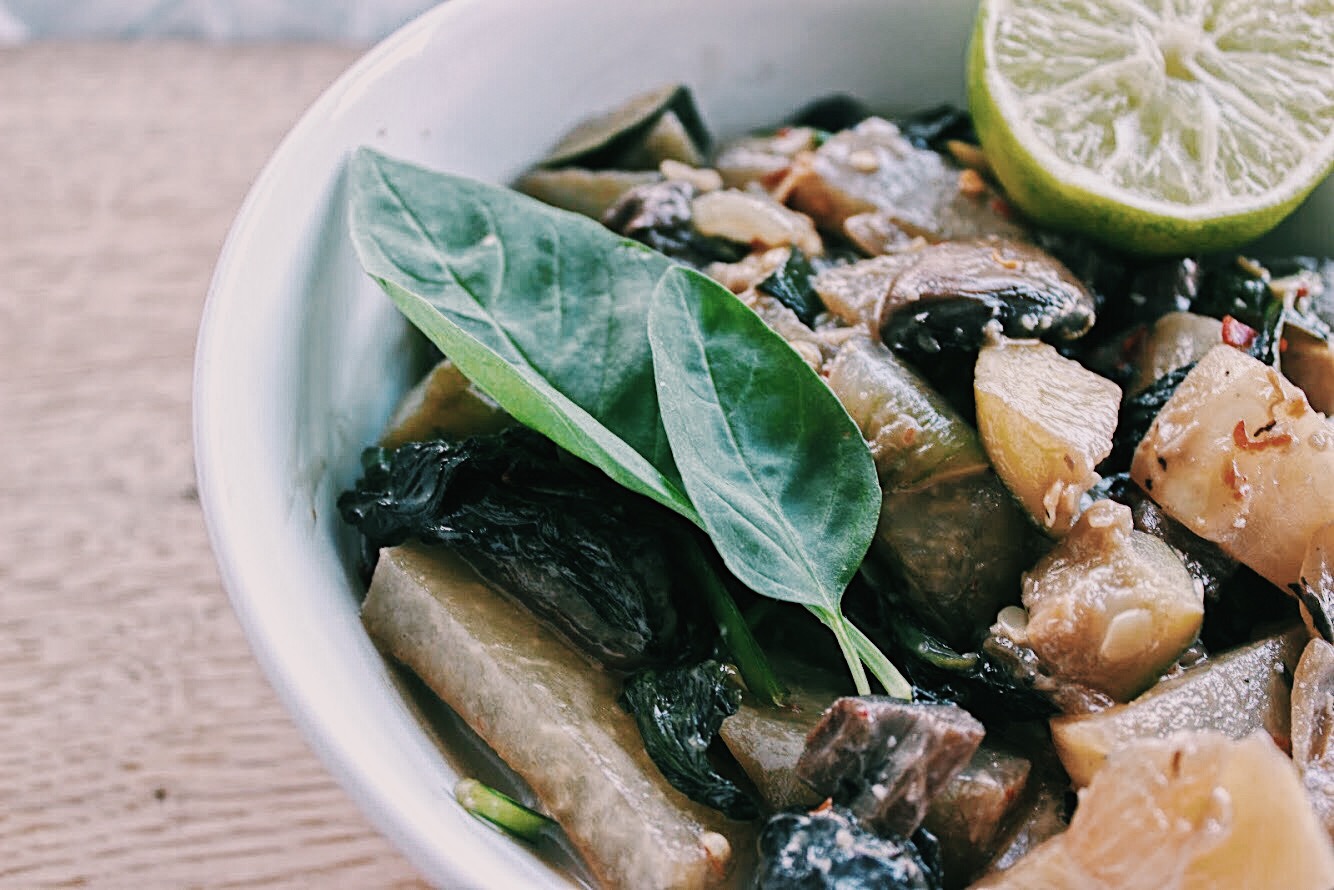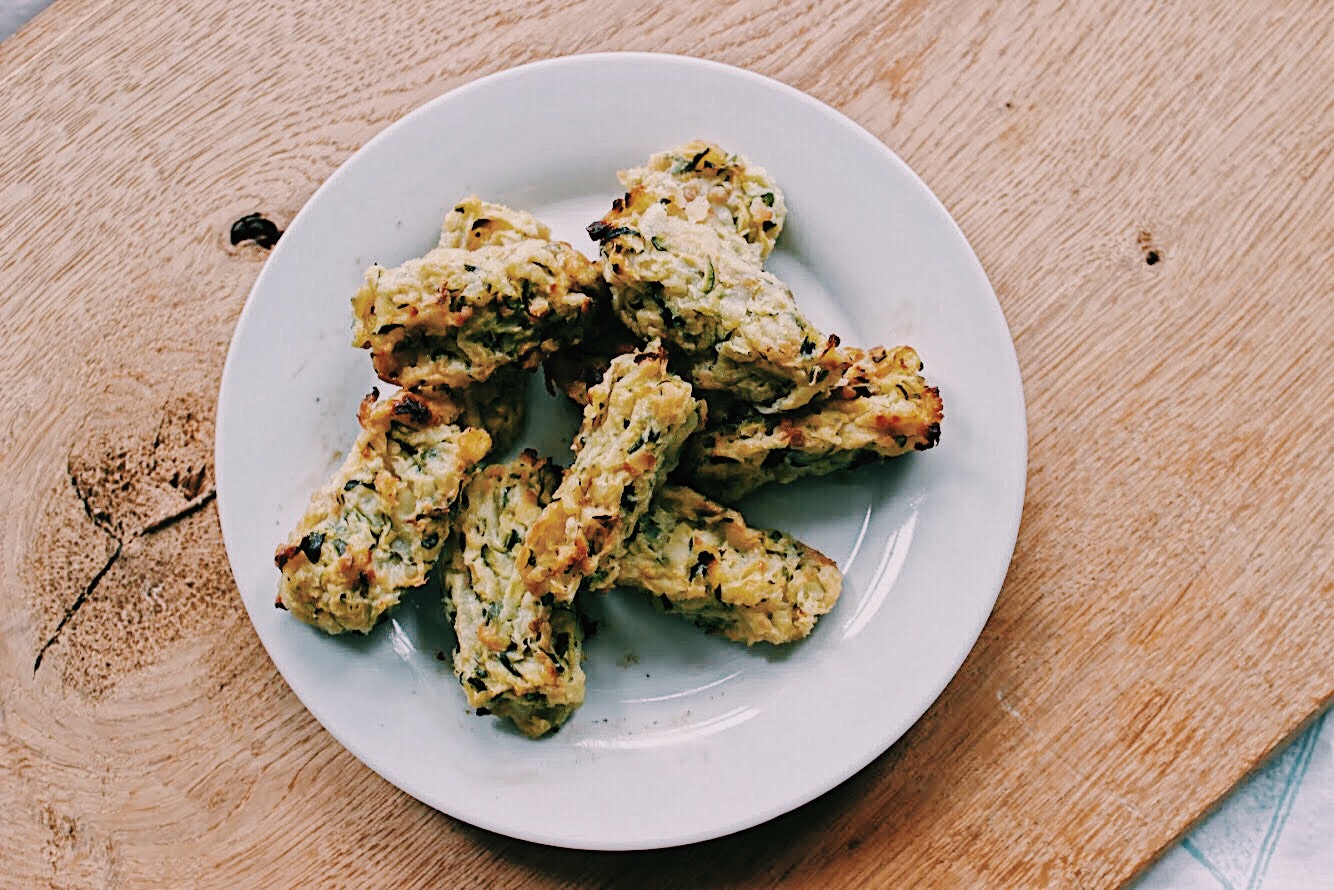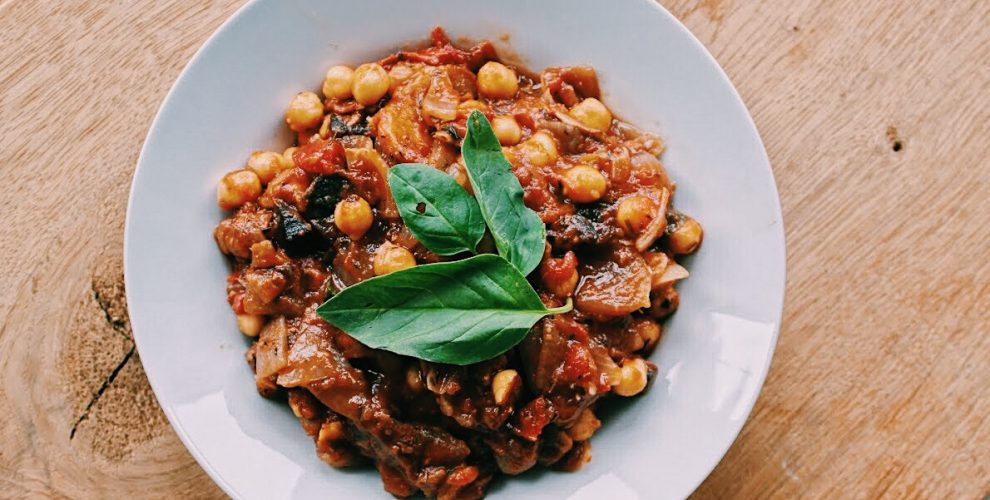I am, one hundred percent, a foodie.
It’s ironic, because my love for cooking emerged a little late. During food classes at school I didn’t do well, and I would get incredibly stressed around the pressure of finishing within the hour (including all our washing up) and getting graded on the results. By the time I became an independent student I had developed more enthusiasm, but not the skill to match it. As time has gone on, however, I’m glad to report my skills have improved a lot. I learned that, for me, I had to start with following a recipe to the letter. As I started to nail staple dishes I then became able to gain more freedom and experiment with my cooking. As I incorporated sustainable thinking into my diet I also found myself exposed to a more creative approach to food. I began to understand much more about the potential in local, seasonal fruits and vegetables, alongside a more varied understanding of putting dishes together. I began to explore cuisines from around the world, coinciding with increased travel time which meant I got to eat a lot more widely myself, experiencing different palettes, flavours and approaches to food.
Which leaves me where I am today. A happy experimental cook, always willing and eager to try something new, but happy to whip up a staple if I haven’t got the time, energy or finance.
I would also say I’m now a more conscientious cook too. By making the effort to really know my way around a kitchen and how I source and work with the ingredients I bring into my home, I’ve also grown my understanding of waste and resource management. Food waste is a huge issue when it comes to sustainability, saving money and alleviating poverty, so I want to make sure my kitchen habits aren’t adding to the problem and to help others do the same. And I think the answer may just lie in wonky produce.



Food waste in numbers
It doesn’t take a genius to see that the way we’re currently treating our food is inherently wasteful:
- Every year in the UK 18 million tonnes of food end up in landfill, which is £23 billion wasted
- Approximately 1/3 of this comes from producers/the supply chain, 1/3 from retail and 1/3 from households
- An estimated 20-40% of produce is wasted before it leaves the farm, never seeing supermarket shelves due to restrictions on size, shape, colour or because it is surplus to requirements. This creates a huge waste problem whilst also putting a large economic strain on farmers
- Costs that aren’t caused by consumers are passed on to us. Business disposal costs means food has higher prices, while landfill costs results in higher local taxes
- The average family waste £60 a month on food that ends up in the bin
- Many people on low incomes or experiencing poverty can’t afford healthy foods, leading to widespread poor health, malnutrition and obesity
- Eliminating global food waste would save 4.4 million tonnes of Co2 a year, the equivalent of taking 1 in 4 cars off the road. And it’s estimated that if only one quarter of the food currently lost or wasted was saved, it could feed 870 million hungry people
Sources: Food Aware and Oddbox
What can we do about it?
With a problem this large it can seem as if there’s no solution, especially because a major part of this is caused by corporations, not individual consumers. While extended producer responsibility is definitely a large and important step when it comes to alleviating waste on a large scale, there still are things we can do on a smaller level to see change happen. I think the first step looks like bringing more ugly fruit and vegetables into our lives.
Companies such as London based Oddbox, (who gifted me a box when I was writing this post, but I actually had used before they even knew who I was!) are leading the charge when it comes to the wonky food revolution. Their fruit and veg boxes exclusively focus on wonky, surplus and local produce. They fight food waste by dealing with the problem at the source, sourcing imperfect but delicious produce for a fair price directly from farms for their boxes, partnering with and directly collecting from over 26 local growers. The fruit and vegetables they rescue are fresh and perfectly good quality, but are either out of specification or surplus to requirements, so would otherwise have nowhere to go. Whilst some of the surplus they take isn’t grown in the UK, they always prioritise taking British produce over anything grown aboard, committing to supporting local businesses and funnelling money back into the British economy.
Oddbox then deliver these boxes to customers at 30% cheaper than average produce box services, whilst also donating up to 10% of their produce to charities that fight food poverty. According to one survey, 51% of people want to reduce waste, and are ready to buy imperfect veg and reduce plastic packaging, but 45% are put off by the higher cost of sustainable goods. Oddbox provides the perfect solution by making sustainability affordable, convenient, and delivered direct to your door. And while they’re at it, they also minimise plastic and re-use or recycle their packaging. Things come unpackaged or in paper (unless it’s pre-packaged surplus, over which they have no control) and you can leave the box out to be taken away and reused again the next week.


Oddbox currently deliver fruit and veg boxes to homes in South London, and fruit only boxes to offices in Central London, however they literally just completed a crowdfunding campaign that will help them expand where their services are available. Alongside their aim to provide more wonky veg to more people, they also want to tackle food waste by normalising the consumption of wonky produce (embrace ugly vegetables everyone! Embrace them!), moving away from the arbitrary cosmetic food standards and plastic waste of regular supermarkets, and alleviating food poverty through their services. So far they’ve helped provide over 90,000 meals to vulnerable people , all as a by product of people choosing a low waste, sustainable food alternative.
The added bonuses
This is where being a foodie comes in. I’m not a fully confident recipe improviser yet, but I have enough skill to be able to cobble things together and figure out how to adapt. The most exciting part of Oddbox, for me, is not knowing what you’re going to get. The medium fruit and veg box that I received (cost: £13.75) contained: satsumas, kiwis, cherries, limes, potatoes, kohlrabi, red pak choi, lettuce, avocados, mushrooms, fresh basil, onions, and courgettes. While some things, such as the fruit, were consumed as is, the vegetables offered exciting opportunities to find new recipes or ideas. The avocado and lettuce ended up becoming the base of a pretty simple salad for lunches over the next few days, but the other ingredients were where it got really exciting.
We used the potatoes and some courgette to create wonky tater tots (which were also kind of ugly, but very tasty, and I think I’ve figured out how to make them better next time!); cooked up the onion, mushrooms, and basil with tin of chickpeas in the pantry, some tomatoes still in the fridge and some rosemary to create a lovely light chickpea stew; and used the kohlrabi, pak choi, mushrooms, courgette, lime and basil to make a thai stir fry in a sauce made with soy sauce, honey (or maple syrup), coconut milk, lime, and chilli. The kohlrabi was a particular wild card, as I’d actually never bought or cooked it myself before. I had to look up how to properly prepare and cook it, before finding a recipe to adapt (I used this one and, clearly, changed it quite a bit). I can confirm however, that after serving that stir fry I was told I ‘cook like a goddess’. And I will take that.

kind of ugly tater tots that tasted amazing


chilli & lime Thai stir fry
I think the ability to know which parts of recipes can be adapted is something that comes with practice and experience, and having ingredients thrown at you that you wouldn’t necessarily choose helps you to practice this (but don’t do it if you aren’t a particularly confident cook! Stick to the recipe in front of you to start with), as well as expanding your tastes and skills as you search for recipes you can match to the ingredients in front of you. But if the prospect of research doesn’t excite you like it does me, Oddbox also include recipe suggestions with each box, helping you to match the exact food supplied to things you can easily make at home. Before you know it, you’ll be a more confident and fun cook than you ever imagined.
Beyond that, eating wonky produce from UK suppliers also means you’re inherently eating seasonally. Not only does this reduce your carbon footprint, as you’re not eating out of season food that was grown in a different climate and flown halfway across the world to you, but this is also better for you, as seasonal produce is at its peak for taste and health benefits. It hasn’t had time to lose flavour or nutritional value due to long shipping times, and it hasn’t been picked before reaching the peak of its flavour in order to survive the journey to the shops. Plus, eating food at the time it’s ready is in sync with what our bodies need at different seasons in the year. Summer fruits, such as stone fruits, provide extra beta-carotenes and carotenoids that help protect against sun damage, whilst citrus in winter is a brilliant source of Vitamin C for fighting off illnesses that are rife in the colder months. Nature is already perfectly designed to be in balance with what we need, so eating wonky, seasonal and local simply helps us to realign.

Chickpea stew







1 Comments